This article will show the simple steps of installing a modern Linux Distribution – Fedora 38 Xfce Desktop with Xfce for the graphical user interface – one of the alternatives, which tries to break the domination of GNOME and partly KDE Plasma. First, it is offered the basic steps for installing the Operating system and then there are some screenshots of the installed system and its look and feel. Here is another article available with more screenshots of the installed and working Fedora 38 Xfce Desktop – Review of freshly installed Fedora 38 Xfce Desktop.
Xfce offers a fast, easy, and lightweight graphical environment for Linux systems and Fedora teams bring it out-of-the-box with their spins projects – Fedora Xfce Spin
This is the simplest setup. One hard disk device in the system is installed, which is detected as sda and the entire disk will be used for the installation of Fedora 38 Xfce Desktop. All disk information in sda disk device will be permanently deleted by the installation wizard!
The Fedora 38 Xfce Desktop comes with:
- linux kernel – 6.2.9
- Xorg X11 server – 1.20.14 and Xorg X11 server XWayland 22.1.9 is used by default
- Xfce: 4.18, which is the latest stable as of the official Xfce site.
For more packages and versions information the user may check out the Fedora 38 server articles – Software and technical details of Fedora Server 38 including cockpit screenshots.
We used the following ISO for the installation process:
https://download.fedoraproject.org/pub/fedora/linux/releases/38/Spins/x86_64/iso/Fedora-Xfce-Live-x86_64-38-1.6.iso
The ISO may be burnt on a disk or written on a USB stick. Just boot up from it.
The simplest way to make a bootable USB drive is to just use the Linux command dd. First, download the ISO file above and then plug the USB drive into the computer and find out the device name, it should be something of /dev/sda or /dev/sdb or /dev/sdc (execute the dmesg command in the console and check the last lines for the USB drive detection and its device name like /dev/sd?). After knowing the USB device name issue the dd command to overwrite it with the ISO. Note, all data will be lost if you use the following command with the device name mentioned in the command line.
myuser@mydesktop ~ # dd if=/mnt/media/OS/Fedora/Fedora-Xfce-Live-x86_64-38-1.6.iso of=/dev/sdd bs=8M status=progress oflag=direct 1610612736 bytes (1.6 GB, 1.5 GiB) copied, 11 s, 146 MB/s1683156992 bytes (1.7 GB, 1.6 GiB) copied, 11.4234 s, 147 MB/s 200+1 records in 200+1 records out 1683156992 bytes (1.7 GB, 1.6 GiB) copied, 11.4559 s, 147 MB/s
The USB flash drive should have at least 4G space. Using the dd command will overwrite the data on the USB drive without warning or confirmation!
The user can check what device name the just-plugged USB Drive has with dmesg console command:
myuser@mydesktop ~ # dmesg|tail -n 20 [1111445.079524] usb 3-2: New USB device strings: Mfr=1, Product=2, SerialNumber=3 [1111445.079526] usb 3-2: Product: IS888 USB3.0 to SATA bridge [1111445.079528] usb 3-2: Manufacturer: Innostor Technology [1111445.079529] usb 3-2: SerialNumber: 088810000000 [1111445.083169] usb-storage 3-2:1.0: USB Mass Storage device detected [1111445.083301] scsi host6: usb-storage 3-2:1.0 [1111446.092244] scsi 6:0:0:0: Direct-Access KINGSTON SNV425S2128GB PQ: 0 ANSI: 0 [1111446.093165] sd 6:0:0:0: Attached scsi generic sg2 type 0 [1111446.093586] sd 6:0:0:0: [sdd] 250069680 512-byte logical blocks: (128 GB/119 GiB) [1111446.093883] sd 6:0:0:0: [sdd] Write Protect is off [1111446.093886] sd 6:0:0:0: [sdd] Mode Sense: 03 00 00 00 [1111446.094489] sd 6:0:0:0: [sdd] No Caching mode page found [1111446.094497] sd 6:0:0:0: [sdd] Assuming drive cache: write through [1111446.100093] GPT:Primary header thinks Alt. header is not at the end of the disk. [1111446.100102] GPT:1402999 != 250069679 [1111446.100104] GPT:Alternate GPT header not at the end of the disk. [1111446.100105] GPT:1402999 != 250069679 [1111446.100106] GPT: Use GNU Parted to correct GPT errors. [1111446.100148] sdd: sdd1 sdd2 sdd3 [1111446.100623] sd 6:0:0:0: [sdd] Attached SCSI disk
The just-plugged USB drive is attached to the system with the device name /dev/sdd.
SCREENSHOT 1) Boot from the UEFI USB Kingston drive.
It is the same as the UEFI USB CD/DVD-ROM bootable device. Choose the UEFI USB drive and boot the installation live drive.
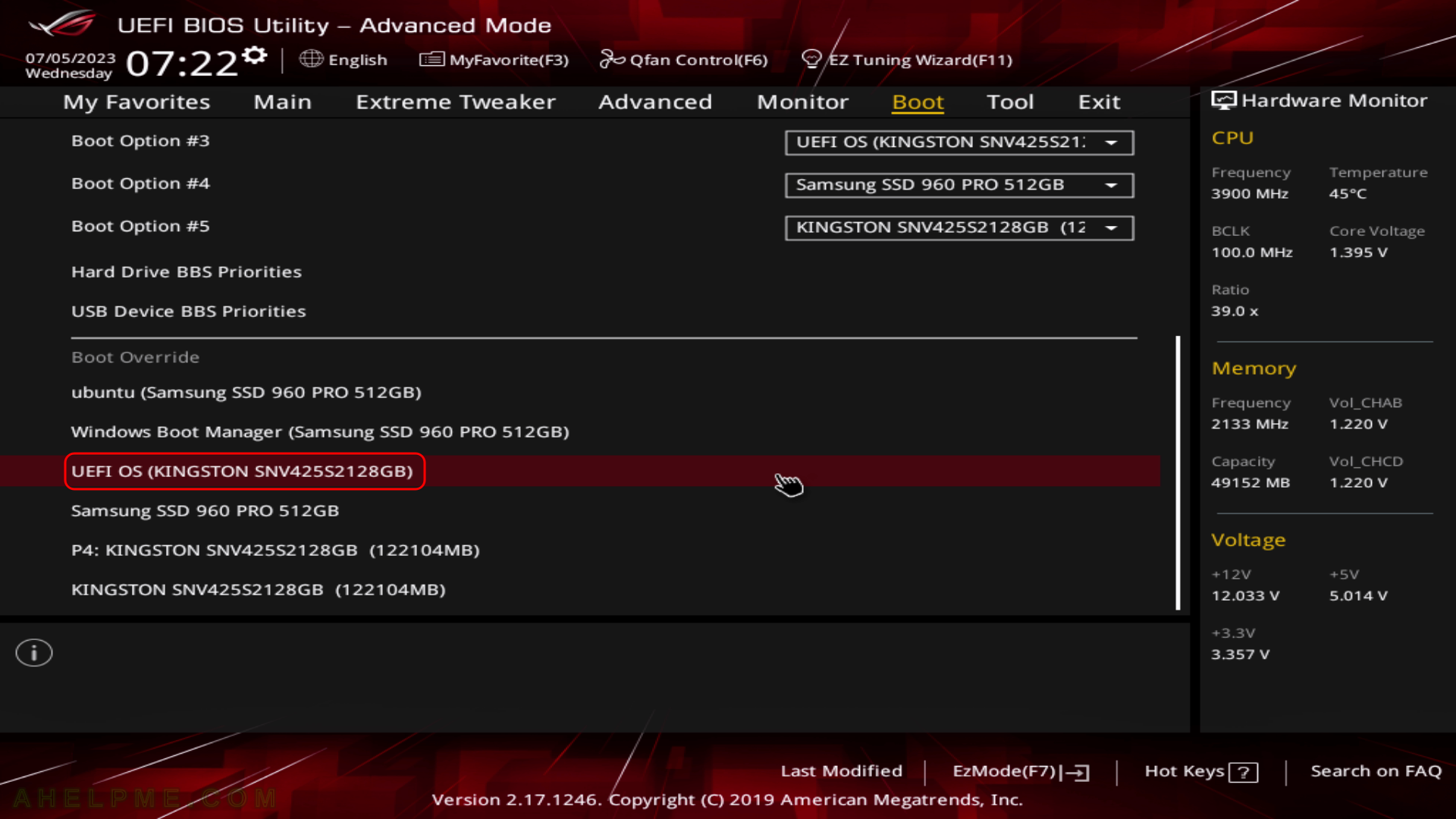
SCREENSHOT 2) Select “Start Fedora-Xfce-Live 38” and hit enter.
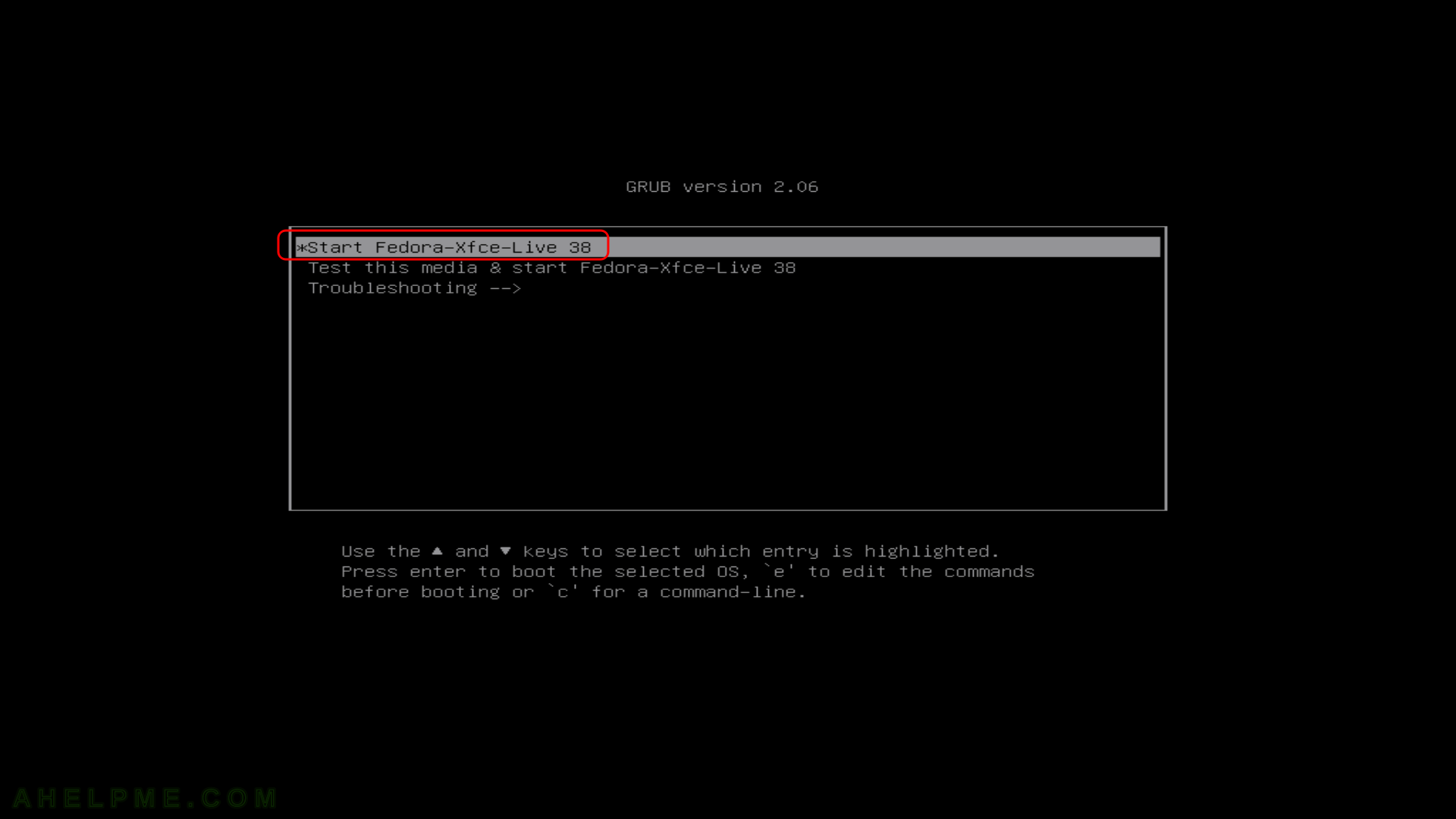
SCREENSHOT 3) The Fedora booting log.
The Fedora Xfce live system is starting up some services.

SCREENSHOT 4) Autologged in the Xfce Desktop of Fedora-Xfce-Live 38.
Click on the “Install to Hard Drive” icon to install Fedora 38 Xfce Desktop.
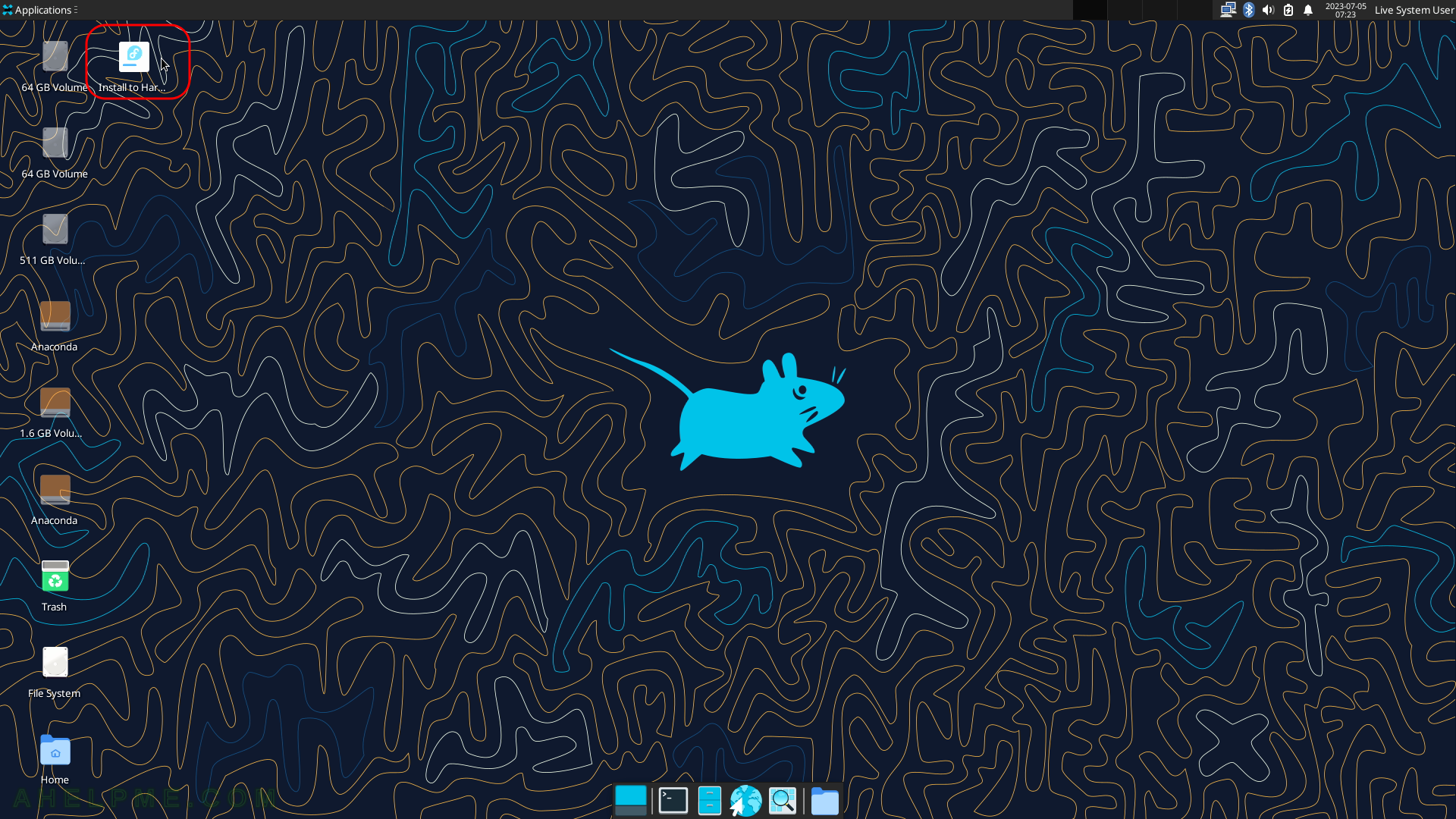
SCREENSHOT 5) Launch the installer even if it is not marked as executable.
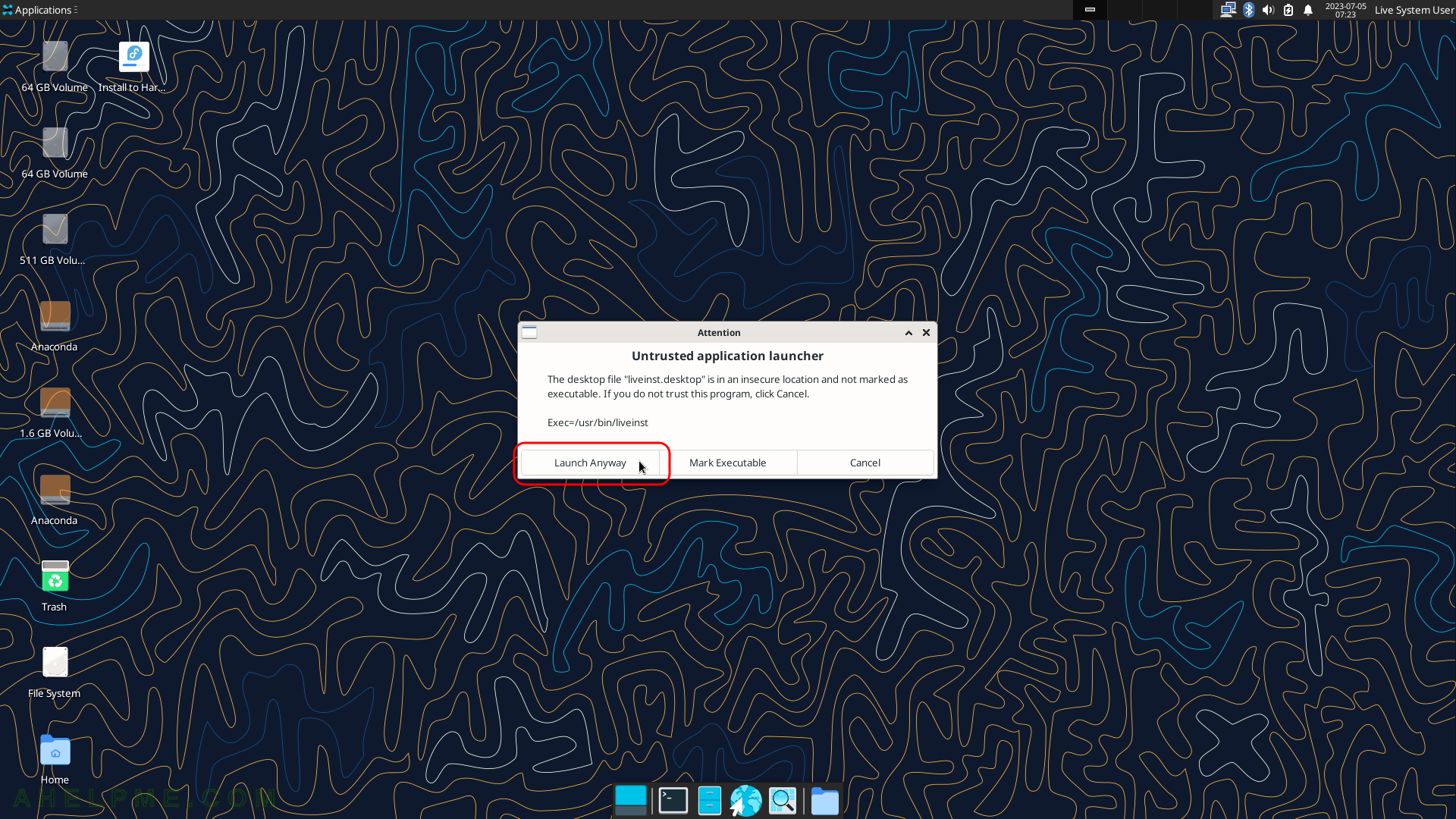
SCREENSHOT 6) Choose your system language. Here we selected English.
The setup will guide you through the steps in the language you select here and the installed system will use the selected language as default.
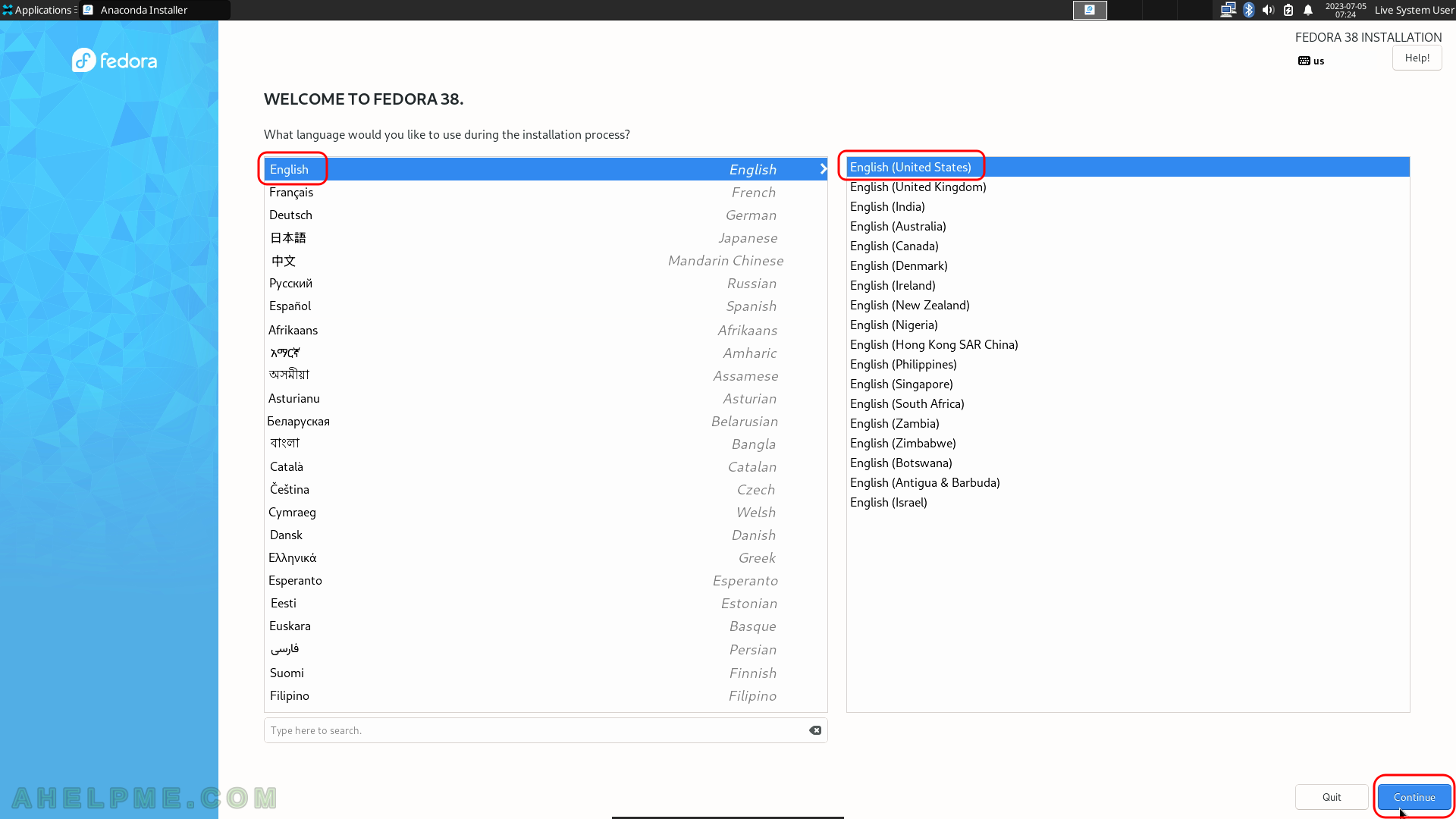
SCREENSHOT 7) Click on “Time & Date” to choose the right time zone for this computer.

SCREENSHOT 8) Select your timezone to configure your clock.
Probably the default is ok, the setup tries to autodetect it. The New York time is selected here. Click on “Continue”.
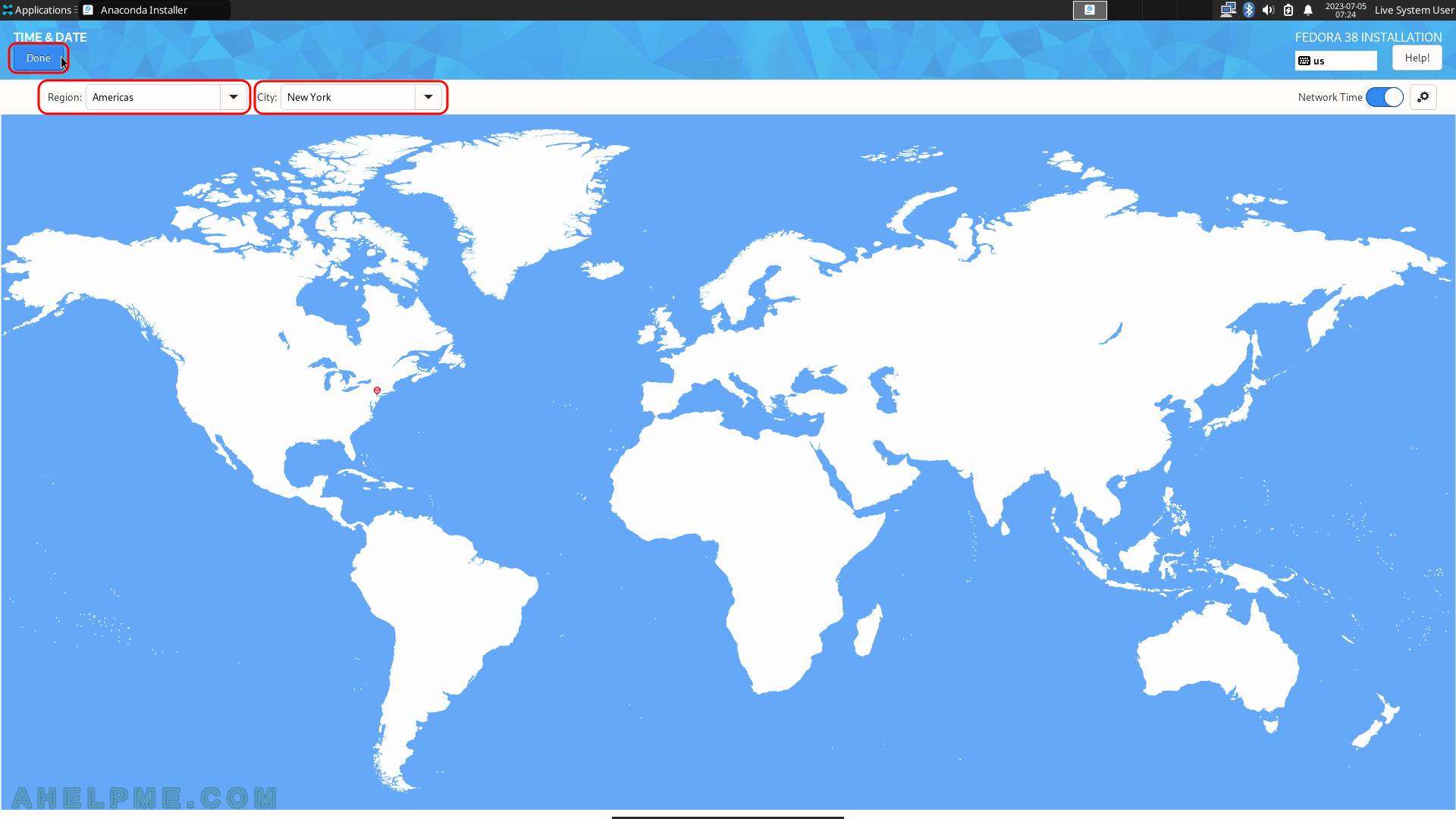
SCREENSHOT 9) Set the network name of your computer.
The hint says which adapter is selected automatically because of DHCP availability.
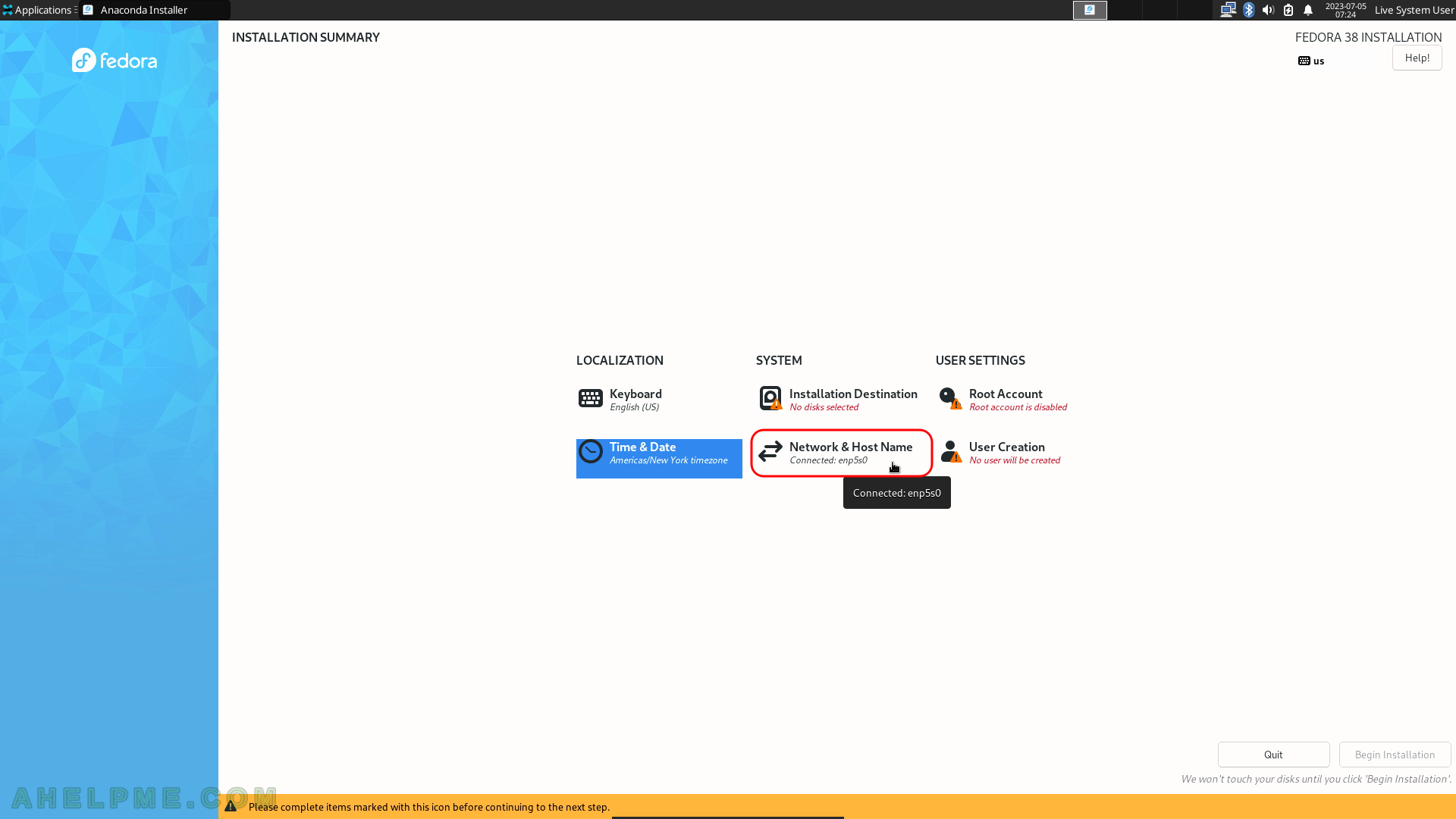
SCREENSHOT 10) Set the hostname of your computer and click on “Apply” then on “Done”.
To use another network adaptor or network configuration you should use the network configuration tools, which come with the Live USB/DVD, but this is beyond the scope of this article. In fact, the setup autodetect the network interface with the Internet (i.e. DHCP server) and use it as the main connection for the computer.
